One of Ireland’s great scenic drives, the Lough Corrib drive in County Galway is a circuit of an inland sea with ever-changing scenery, ruins, castles, sheep-lined roads and plenty of places to visit.
Covering 176 square kilometres with a highly indented shoreline and stretching 44 km northwest from the city of Galway , Lough Corrib is the second largest lake on the island of Ireland and divides the western part of County Galway known as Connemara from the rest of Ireland.
The route begins and finishes in Galway providing a perfect circular drive along both shores of Lough Corrib that is great for a day’s adventure. Through this small but vibrant city the River Corrib, Lough Corrib’s only outflow, makes its way powerfully into Galway Bay and the Atlantic Ocean.
A walk along the river bank upstream from Spanish Arch will show the force of the short River Corrib.

En route there are plenty of things to do, sights to see and places to eat so read on to discover more.
Now it is time to get into the car and head out of the small city. Very soon the countryside begins to show its beauty.
It is possible to drive this route clockwise or anti-clockwise. This article describes an anti-clockwise journey.
Head north on the N84 Headford Road signposted for the towns of Headford and Castlebar following the eastern side of the lake. For the first section this is a rather uninspiring road, very busy with traffic and laden with roadside industry for a few miles.
After McGaugh’s Garden Centre on the left the true countryside begins. This road is straight for several kilometres and will present you with the opportunity to view long distances across bogland to the left and right.
This is a classic Irish landscape, the brown and fawn colour spreading out on either side of the road in the flat countryside with evidence of peat cutting, a practice of cutting the bogland (made up of compressed vegetation), stacking and drying it to be burned as a fuel.
To your left lies Lough Corrib, mostly invisible, there are but brief views; the mountains of Connemara rise above the horizon with only a few trees interrupting the flat landscape. Best not to have the driver looking too hard for the lake at this point!
Annaghdown
After approximately 16 km turn left for Annaghdown on the L2118. After 3 km turn right and the small harbour is your first view of the lake situated alongside impressive ruins. These are the vestiges of a church, cathedral and abbey, with some fine stone carving dating from the 12th century and later.

It is indeed fitting to call Lough Corrib an inland sea, for it is said to be named after Oirbsen a name used for Manannan mac Lir, a god of the sea in Irish mythology. The same figure who gives his name to the Isle of Man, the Irish Sea’s largest island.
A commemoration to 20 people who died on the lake during a boating tragedy in 1828 is situated beside the harbour. The tragedy was immortalised in a poem by Raftery, a wandering, blind, Irish language poet whose works were written down by contemporaries.
Keep straight on the N84 if you want to skip this location.
Headford
The busy market town of Headford is centred around a crossroads and the N84 turns right at the traffic lights. A sign to the left for Ross Errily takes you past Joyce’s supermarket, a good place to stop for provisions if you plan to have a picnic.
Ross Errily
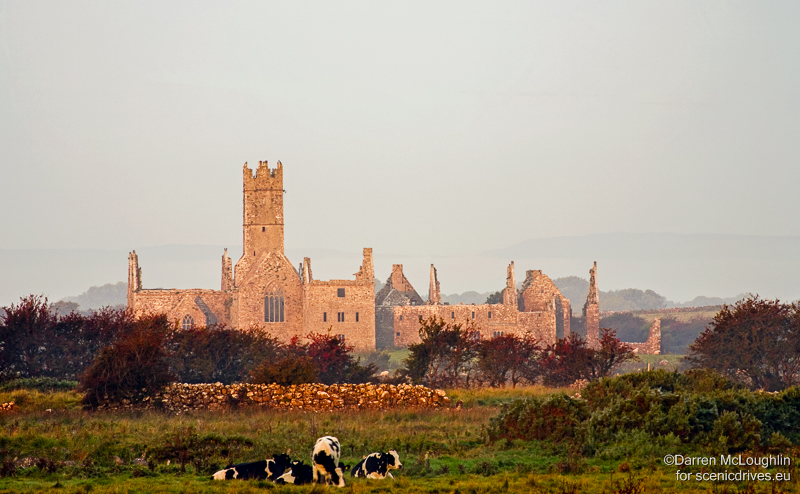
Head out of Headford on this local road for 1.5 km where a small lane to the right takes you to what are possibly the most impressive monastic ruins in Ireland. The Franciscan Friary of Ross Errily sits on a plain beside the Black River and contains fantastic stone work by mediaeval monks. Feature windows, a tower and cloisters situated amongst lush green fields grazed by cattle and sheep add to the feeling of calm.
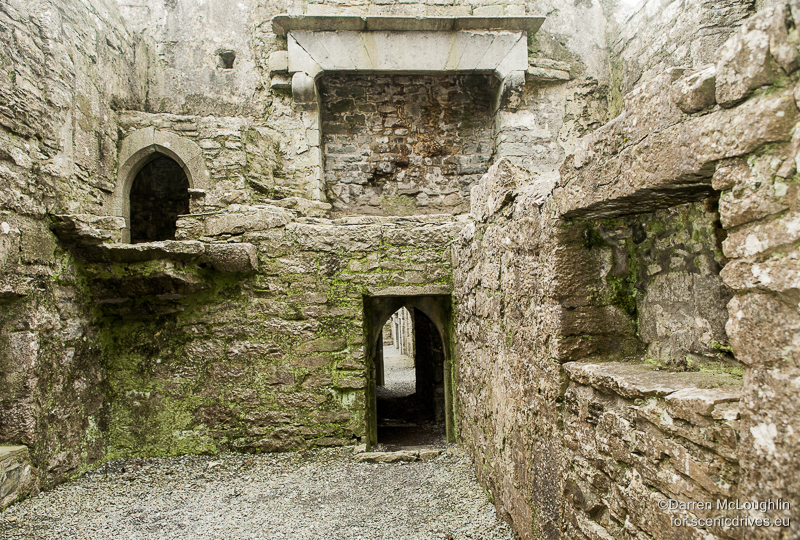
The Franciscans first came to Ross Errilly in 1351 but the earliest extant sections of the buildings date to the mid fifteenth century. Repeatedly evicted over the next few hundred years the Franciscans returned each time until finally abandoning the friary in 1753.
Head back to Headford and turn left at the traffic lights, take the R334 signposted for Cong. In the village of Cross turn left on the R346. Not far off this road lies Moytura House, the childhood home of Oscar Wilde whose father William studied and wrote at length about Lough Corrib.
Cong and Ashford Castle
It would be easy to spend half a day in lovely Cong. Quite unlike anywhere else in Ireland the village sits on an island on a narrow isthmus, surrounded by the water that flows between Lough Corrib and Lough Mask though the porous limestone rock of the region.
Famous for its association with John Ford’s The Quiet Man starring John Wayne and Maureen O’Hara that was filmed here in the 1950s, Cong is home to ancient monastic ruins and lovely walks through the woods leading to caves with streams and ruined castles.
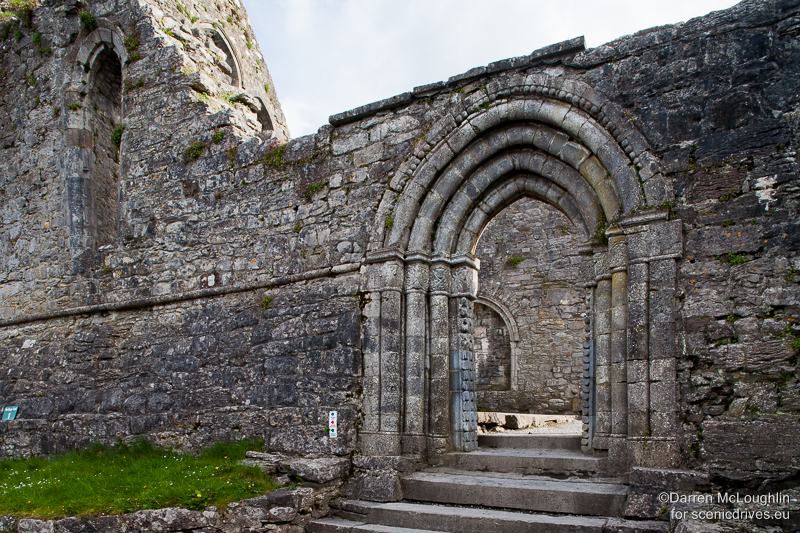
An aside – Before the village there is an impressive large gateway and often a nice man who will charge a fee to visit the estate grounds of Ashford Castle, with remnants from the mid twelfth century the castle has been enlarged and modified over the centuries, most notably by Arthur E. Guinness known as Lord Ardilaun, great-grandson of the Arthur Guinness who in 1759 founded the world’s most famous brewery bearing his name. Ashford Castle is now a hotel.
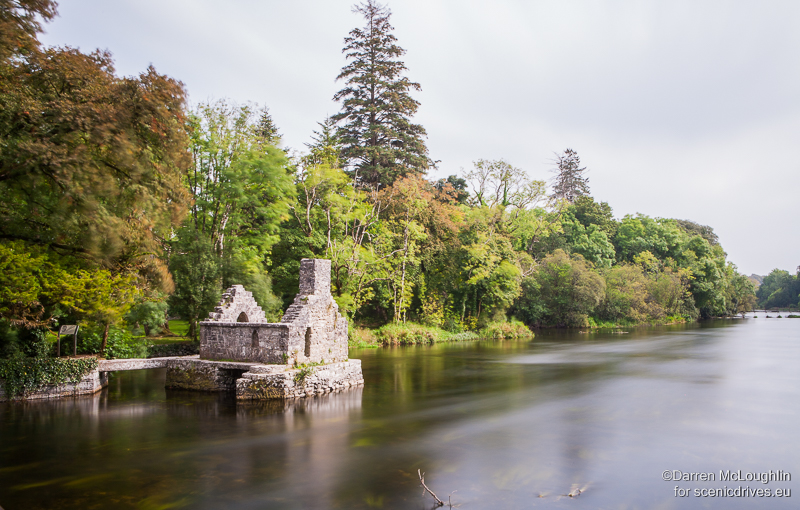
At the entrance to the village there is a roundabout, to the right there is a car park and in the busier months it is definitely best to park here and walk into the village a short distance away.
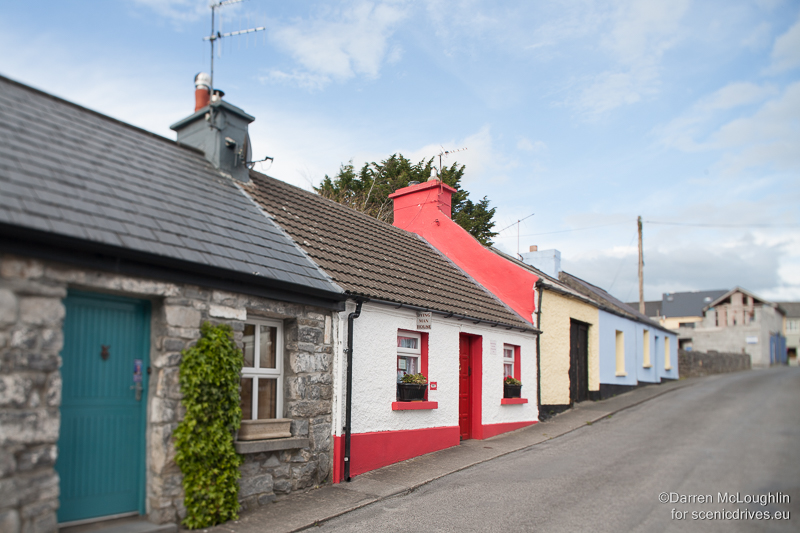
The ruins of Cong Abbey are the real star attraction in the village. Inhabited by Augustinians on the site of a 7th century church, most of the buildings including the doorways date from the late 12th century. The fishing hut pictured had a fireplace and chimney and using a hole in floor the monks could sit and fish here in comfort year round. It dates from the 15th century.
The monks were evicted by Henry VIII in 1542 and the buildings fell into a bad state of disrepair until Sir Benjamin Lee Guinness undertook restoration work after buying nearby Ashford Castle in the 1850s.
Rory O’Connor, the last high king of Ireland lived in Cong Abbey for 15 years until his death in 1186 and there is a stone carving of him over a doorway on the bridge by the monks’ fishing hut.
Clonbur / An fhairche
In the small but pretty village of Clonbur follow the road around to the left for Cornamona and Maam.
Because you are in the Gaeltacht, an Irish language speaking area, some road signs will only have the Irish placenames. Clonbur is one of those places whose placename causes confusion, just like Dingle or An Daingean as seen on our Dingle Scenic Drive.
In the Gaeltacht, Clonbur is known as An fhairche and signs are erected with this name while maps will refer to it is Clonbur. Helpfully some locals have added Clonbur onto road signs to aid navigation.
Corrib View
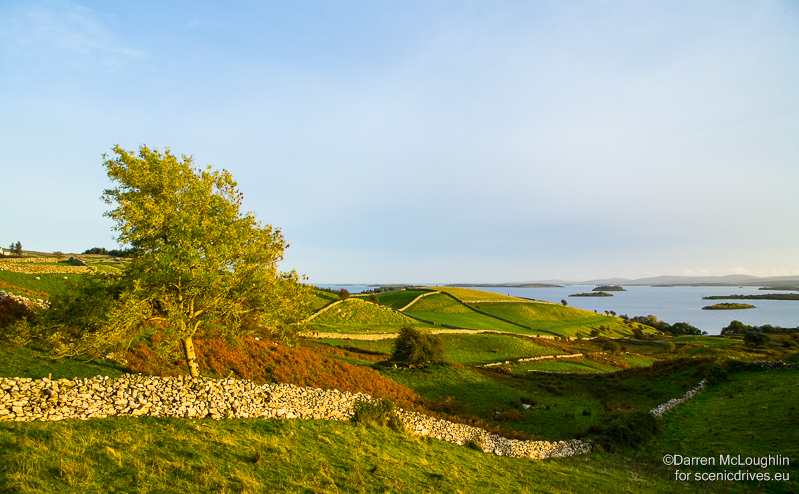
Within a few kilometres the road starts to dip and you are presented with what is probably the most famous view of Lough Corrib; stone walls and green fields drop away from the height you presently find yourself on. In the distance mountains begin to rise towards the right and the shimmering lake with a multitude of wooded islands lets you know that this is a view worth stopping to admire.
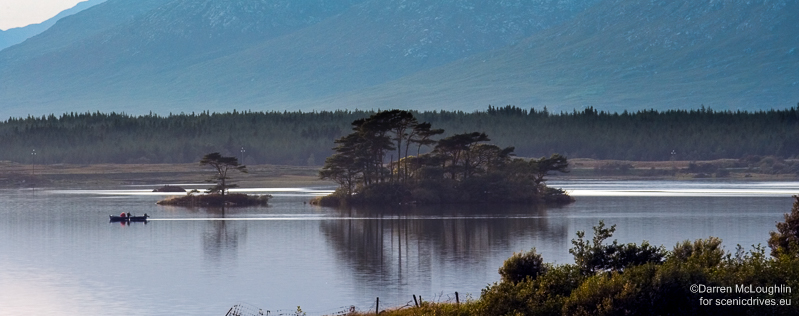
Maam
Turn left over the river in the small settlement of Maam, a shop and a pub stand beneath the mountains in this wide valley. The bridge crosses a navigable river with mooring just 3 km from the most northerly point of Lough Corrib.
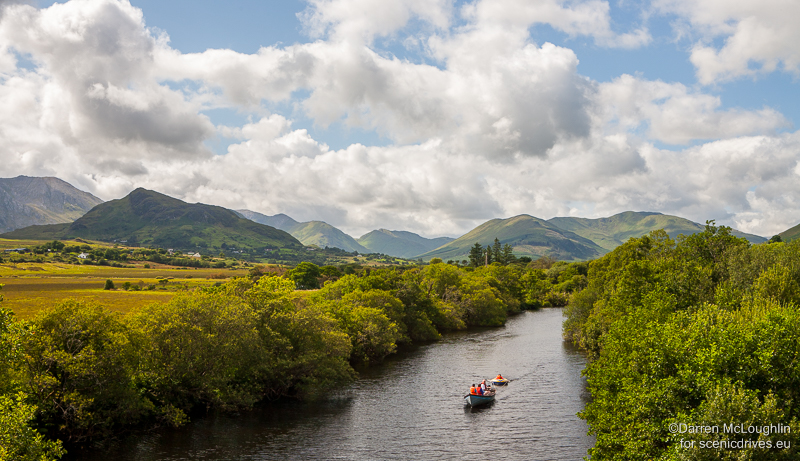
View back down valley – picture The road now climbs towards a high pass with Lackavrea mountain on your left. The soft green contours of the ancient weathered mountains slowly change to typical upland colours of brown and yellow, purple with heather in the summer.

Maam Cross
Descending from the height of the pass, the wide open plain of Connemara lies before you. Lakes and bogland stretch out in all directions below a large, unending sky. The next settlement you arrive at is Maam Cross. Turn left onto the N59 Galway to Clifden road past the only building of note here – Peacocke’s Hotel.
Quiet Man Bridge
Even if this twin-arched stone bridge wasn’t associated with John Ford’s The Quiet Man it would still be worth stopping for. It was built sometime around 1800 from nothing but local stone and spans the end of a lake. Locals would have known it as Leam Bridge until recent years. A still from the film, of John Wayne standing on the bridge is set into the ground here.
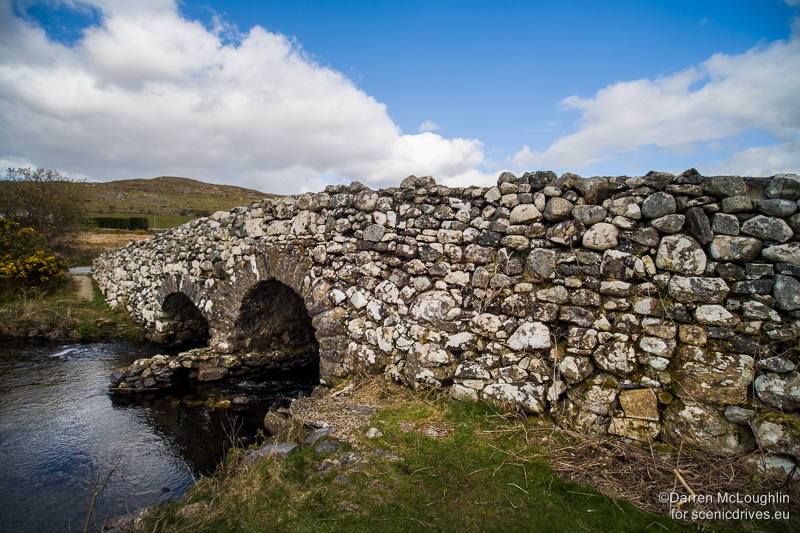
Glengowla Mine
This former silver and lead mine is located a few miles before Oughterard on the right heading south on the N59.
With regular tours of the 19th century mine workings, the hard life of a miner becomes apparent. Tool marks in tight crawl spaces and damp working conditions along with original documents relating to the mine and its workers shed light on what was a dangerous, difficult place to work.
In this part of Ireland there was little other employment and the land was not as productive as the fields east of Lough Corrib, the mine provided at least some opportunity to earn a wage.
Glengowla mine closed in 1865 but is now one of Ireland’s most interesting show mines. As well as the underground tour, there is an opportunity to pan for gold and view the seismological equipment on site.
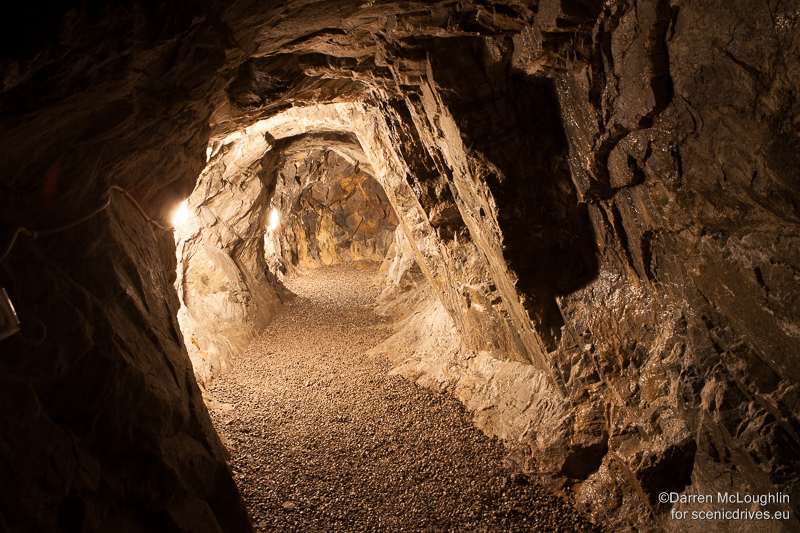
Opening Hours: 10:00 – 18:00 daily 01/03 to 31/10 see www.glengowlamines.ie for more information.
Oughterard
The bustling village of Oughterard is situated on the western side of the lake and calls itself the Gateway to Connemara. And it is in driving from Galway along the N59 after Oughterard that the landscape changes to that which is typical of Connemara – bogs, lakes, mountains and sky. Oughterard, like Headford on the other side of the lake, is a popular base for angling and is situated on the small but pretty Owenriff river.

Aughnanure
Situated on the Owenriff downstream from Oughterard, Aughnanure is one of the finest tower houses in Ireland. Tower houses were fortified residences built by powerful Irish families in the 15th, 16th and 17th centuries. Aughnanure is flanked on one side by the river, adding a level of protection and also has two bawns or surrounding walls.

Opening Hours: 09:30 – 18:00 daily 16/03 to 28/10
Brigit’s Garden
A real gem in this part of Ireland is found at the peaceful Brigit’s Garden, designed by Chelsea gold medal winner Mary Reynolds. Brigit’s Garden was created by Jenny Beale who commissioned local craftspeople to design elements in addition to Reynolds’ landscaping.
The gardens interlinked and are designed around the four Celtic festivals celebrating each season samhain (November 1st), imbolc (February 1st), bealtaine (May 1st) and lughnasa (August 1st).
Situated a few miles from Oughterard in Rosscahill it is signposted to the left off the N59 heading towards Galway; on arrival you will find a treasure trove of landscaped gardens set amidst natural features including native woodland and marshland.
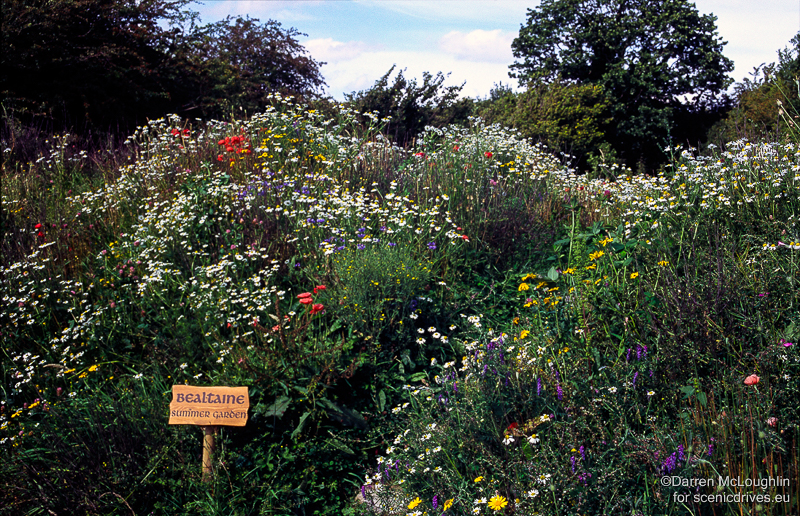
There is a coffee shop and the café serves sandwiches, galettes and crepes as well as picnics for eating in the gardens.
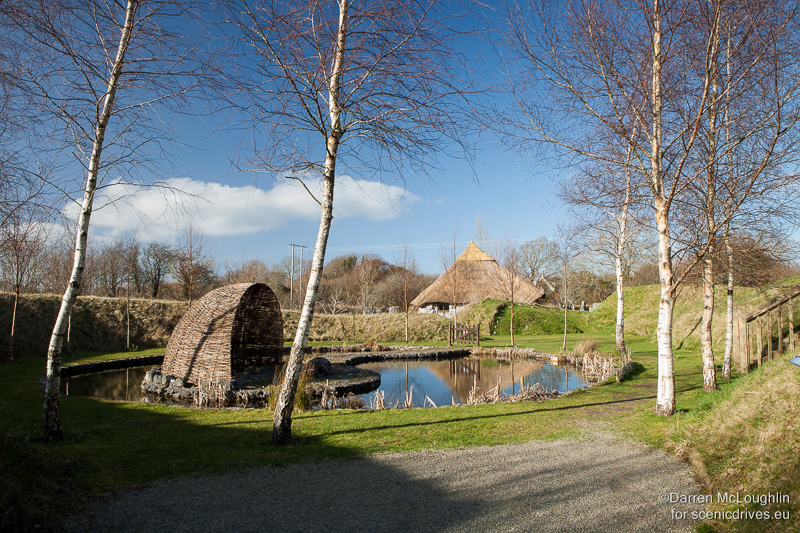
Opening Hours: 10:00 – 17:30 daily all year. Entry price varies by season. For more information see http://www.brigitsgarden.ie/
Map of the Lough Corrib Scenic Drive
Places to Stay
Galway makes an ideal base for the Lough Corrib scenic drive, as this is a circular route and one of Ireland’s livliest cities.
The House Hotel in Galway City is a small hotel located in the centre in an area known as the Latin Quarter, just a minute’s walk from Spanish Arch and Quay Street.
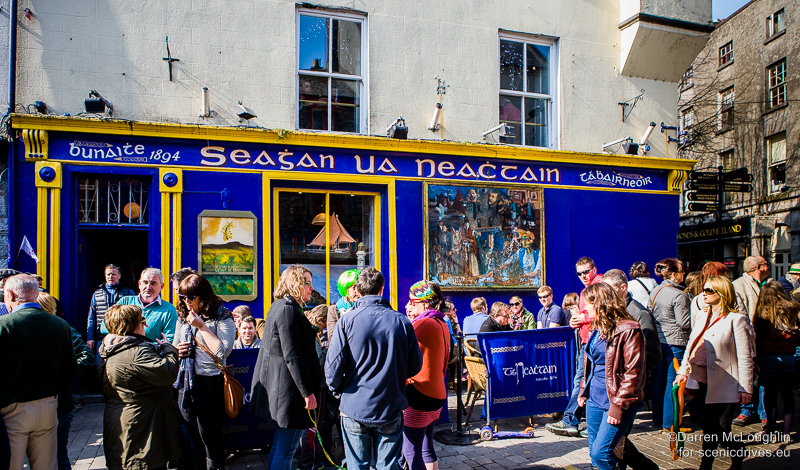
Parking is available one minute away in a multi-storey car park for €8 for 24hrs.
Dinner is available in the restaurant and the bar is well known for cocktails. The 40 room hotel features tastefully decorated rooms and is “One of the best places to stay in Ireland” according to the New York Times.
Rooms are available from €79 and booking can be made via the House Hotel’s website here.
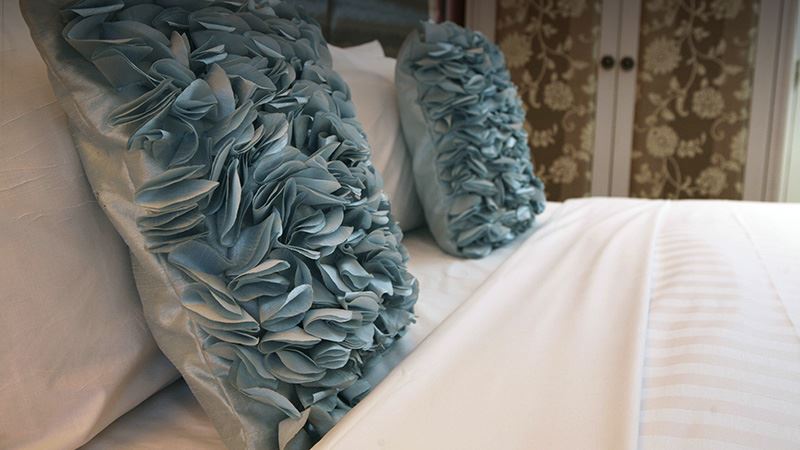
Activities / Things to Do
Aside from the places mentioned in the guide there are lots of options for things to do around Lough Corrib.
Angling
Fishing is free on Lough Corrib and there are good stocks of brown trout, sea trout and salmon. The season varies but runs from February to the end of September. For more information on fishing on Lough Corrib see here.
Mountain Biking
Derroura woods has over 16 km of trails, mostly singletrack with some north shore and great views of Connemara’s mountains and Lough Corrib. Mountain bikes can be hired from West Side Cycles in Galway and includes a free bike rack to put on your rental car to take the bikes out and back to the trail. For more see here.
Photography
Panoramic Ireland create personalised photography tours, day trips and workshops for all ages in Galway and throughout Ireland. Perfect for individuals, couples, families and small groups, Panoramic Ireland can meet you at your hotel or anywhere along your journey. Find out more at Panoramic Ireland.
Darren McLoughlin is a photographer, tour guide and author. He is from Ireland. Get in touch with him on Twitter @travelimages and Google Plus +DarrenMcLoughlin
All content in this article ©Darren McLoughlin and ©scenicdrives.eu. No reproduction without written consent.

Does the little village of Ballymoy still exist in this area?
Hi Christine, Do you mean Ballymoe?